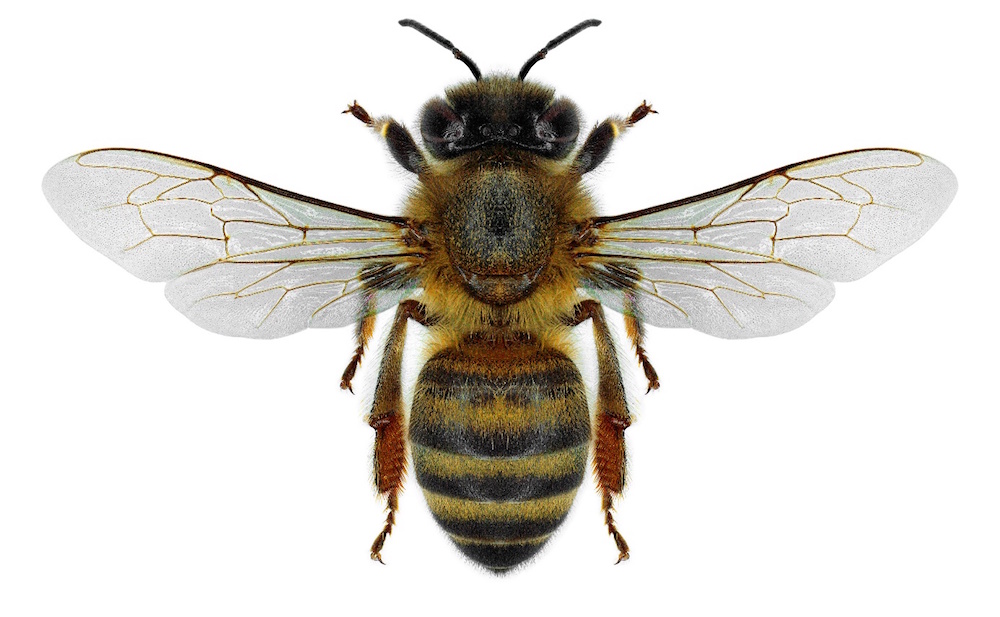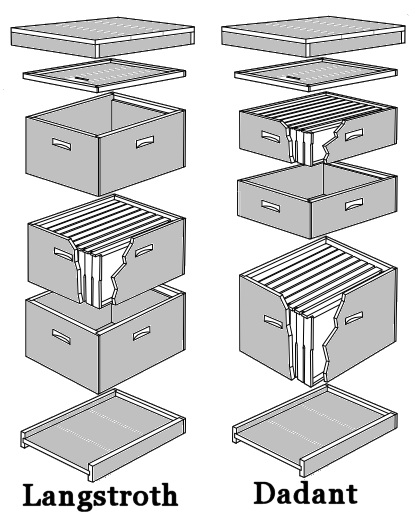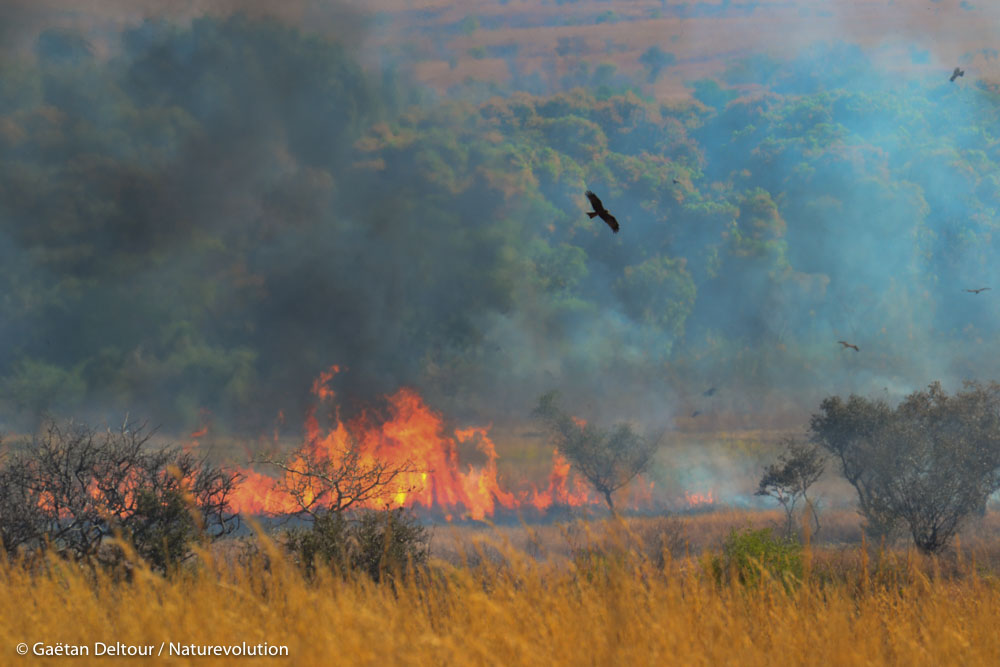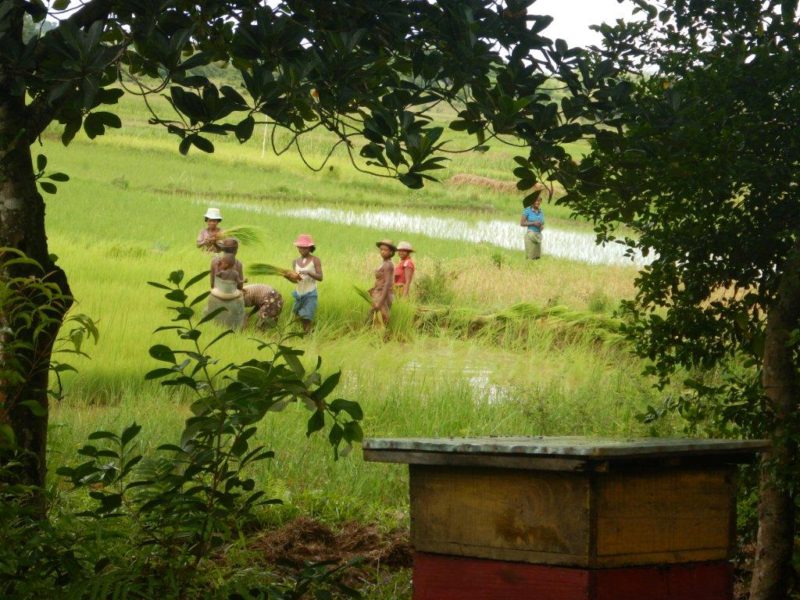In 2018, Naturevolution launched a pilot project to develop beekeeping in villages around the Makay massif in Madagascar.
This project, which has received support from theMicro Projects Agency and other partners, and for which we are seeking additional funding, has two main objectives: firstly, to train the first beekeepers and craftsmen, as well as an initial sales network; and secondly, to gather the elements needed to launch a larger-scale project. To give you a better understanding of the project as a whole, here’s a look at the world of beekeeping in Madagascar.

The Madagascar bee
Madagascar is well known for its exceptional endemism, with rates exceeding 80% for insects and even approaching 100% for certain groups. Madagascar’s bee is no exception to this rule, with the Apis mellifera var. unicolor, an endemic subspecies among the 28 subspecies of Apis mellifera known worldwide.
It is characterised by a uniform dark colour and has little hair all over its body (Ruttner, 1975). The workers of this variety of bee are among the smallest in the genus, while the males are relatively large (Ruttner, 1987). Not only does it help to pollinate a very large proportion of Madagascar’s endemic local flora, but also major food crops and export crops such as lychees.
According to an INRA and CNRS study, 35% of the world’s food production is directly dependent on pollinators. The value of the insect pollination service has been estimated at 153 billion euros, or 9.5% of the value of global agricultural production.

History of beekeeping in Madagascar
- 1920-1940 – Beekeeping is Madagascar’s third-largest source of income, with 38,000 tonnes produced, over 65% of which is exported annually to Europe.
- 1951 – honey embargo by Europe for non-compliance with European standards following the addition of sugar and water to these products.
- 1996 – European embargo on animal products from Madagascar, due to hygiene standards.
- 2011 – The European Union puts an end to the embargo on Madagascan honey
- 2012-2014 – 17 tonnes exported
- 2014-2015 – 54 tonnes exported
To return to the issue of honey quality, honey is measured for its water content and the target percentage is less than 21%. Product purity and filtration are also important. The difficulty of meeting this quality standard in Madagascar lies above all in the low level of training of beekeepers, the high illiteracy rate and the need to comply with international standards for honey extraction (approved honey house).

Traditional and modern techniques
Beekeeping in Madagascar is practised at various levels:
- Beekeeper-gatherers (50%) collect wild swarms, which are more numerous in forests. Unfortunately, this practice results in the total destruction of the swarm, and the tree in which the swarm is located is often felled.
- Swarm-hunting beekeepers (35%) will carry out traditional breeding using swarms collected in forests. A hollow tree trunk serves as a beehive. The colony is attracted there to produce honey. This practice is more respectful of bees. However, because the techniques used are not very sophisticated, yields are low: between 4 and 7 kg of honey for a traditional hive, compared with between 10 and 20 kg for a modern hive (per year).
- Integrated beekeepers (15%) work in partnership with honey factories or cooperatives. Their production techniques are similar to those used by ‘modern’ beekeepers in France, for example.



The hives used in Madagascar
In addition to traditional hives built from tree trunks, Madagascar has 2 main types of modern hive, Dadant and Langstroth.

The eternal debate between beekeepers concerns the comparison between the “Langstroth” hive and the “Dadant” hive, and Madagascar is no exception to this rule, to which we must add regional modifications (“Bourbon” hive). The hive body of the first is smaller and therefore easier to handle, but offers less food for the colony in times of shortage. The honey supers are larger for the Langstroth hive, but it is easy to fit two or three supers on a Dadant hive body.
In Madagascar, a beehive produces between 10 and 60 kilos of honey a year, depending on the vigour of the colony and the quality of the melliferous environment and the weather. In the East, beekeepers make four honey collections a year (niaouli, polyfloral, macaranga, litchi).
The advantages of beekeeping in Madagascar
Beekeeping is an important part of Madagascan culture and is widespread throughout the count Honey enjoys a very good image here and is traditionally used as a sugar substitute, in therapy and cosmetology.
- Huge, unexploited potential: the rich flora and climate mean that a huge variety of species can flower for long periods. They enable Apis mellifera var. unicolor to produce several harvests of succulent honeys throughout the year, with a wide range of flavours resulting from the large number of species foraged. It is indeed possible to obtain up to four harvests a year, but this is only possible if beekeepers have access to technical information and specialised equipment, the main obstacles in Madagascar.
- Additional income for farmers, especially during the lean season (the difficult period between harvests). This income can enable every household to access quality education and healthcare in a healthier environment.
- The development of beekeeping can contribute to environmental protection, as mentioned in a study published by CITE on beekeeping in Madagascar (2004) A reduction in deliberate bush fires has been observed in areas where beekeeping is practised.

Constraints to the development of beekeeping
- Deforestation: this destroys the variety and number of species of melliferous plants, and has a major impact on the decline in wild bee populations.
- The low purchasing power of rural populations makes it impossible to invest in the purchase and maintenance of modern hives, let alone in suitable beekeeping equipment (extractor, containers, embossed wax, etc.). Insecurity blocks new initiatives and the opening up of new opportunities).
- The lack of know-how in certain regions such as the Makay, hence the importance of learning beekeeping techniques and monitoring the implementation of the beekeeping project.
- But the most important limiting factor is undoubtedly the absence of a structured market to sell production.
- In 2009, the varroa mite, an extremely harmful parasite (nicknamed the “bee vampire”), made its appearance in Madagascar. Madagascan beekeepers are benefiting from the experience of their European counterparts and are now developing effective techniques to combat the parasitosis.

B/ Two parasitic mites on bees.
C/ Map of the distribution of the Varroa destructor mite in Madagascar in 2011-2012 On 05 February 2017, the presence of the Varroa mite was detected in Manakara, a pilot beekeeping region in Madagascar. (black triangles = non-infested sites; red triangles and blue stars = infested sites)

The local honey market
Good honey” from modern beekeeping is bought in bulk by wholesalers at between 5,000 and 8,000 ariary per kilo (€1.40 and €2.20), and is distributed in the retail trade at around €8 to €10 per kilo.
There is a strong demand on the national market for quality honey, which current production cannot meet. Harvested products are often of mediocre quality, dirty or with water added, and are intended for undemanding or low-income consumers. The island’s collectors, retailers and restaurateurs are also looking for quality honeys.
Beekeeping in the Makay
In the Makay massif, forest honey is multi-floral. On the edges of the villages, it is dominated by fruit trees, mainly citrus. The good quality of the water and the multitude of natural storage points make the work of the bees easier and improve the quality of the honey.
The region’s hunters and gatherers have always collected honey from cavities in trees and rocks. This technique is destructive because it jeopardises the survival of the entire colony, depriving it of all its reserves and sometimes accidentally killing the queen.
The launch of a bee-keeping project in the Makay region was based on the simple observation thatthe cultural and traditional importance of honeythe empirical skills of swarm gatherers and honey hunters, the beekeeping potential of the Makay, and the success of therunning small family apiaries despite archaic and inefficient means. The project is also based on an inter-regional cultural exchange (East/West) with regions that have already developed modern beekeeping, such as Manakara.

Beekeeping to help conserve the Makay
Objective 1: Improve family incomes
Farmers living along the Makay Massif are still looking for alternative sources of income that would enable them to buy basic necessities to provide food during the lean period between harvests. The current consequences of this lack of additional income are poaching, particularly of lemurs, and the increase in bush fires for zebu rearing. It is also only with better living conditions that local populations will be able to access education, better health and nutrition, and, finally, to take care of their environment.

Objective 2: Preserving the environment.
The development of beekeeping in the Makay, as in other protected areas elsewhere in the world, aims to raise the awareness of local communities to an awareness of the need to preserve the forest, vegetation and watercourses. The various regional analyses that have been carried out show that beekeeping is an economic activity that effectively raises awareness about preserving natural resources, as it is directly dependent on them.
For current bee-pickers, for whom the sale of honey is a significant source of income, the aim is to ensure that swarms are not destroyed or trees felled during the harvest, and even to help them make the transition to modern beekeeping, a transition that will rapidly benefit their business. For all the beekeepers, the training emphasises the link between honey production, its quality and the health of the environment, leading them in turn to become involved in protecting the environment in their villages.
However, beekeepers need to be able to access a market of sufficient size to sell their products, something that has so far been hampered by the Makay’s isolation. Naturevolution Madagascar’s mastery of the complicated logistics inherent in the Makay is the key factor in the success of this project, which links the villages of the Makay with the rest of the country.
> Find out more about the beekeeping pilot project that Naturevolution is developing in the first villages of the Makay.
You too can support this project
on our crowdfunding campaign!

